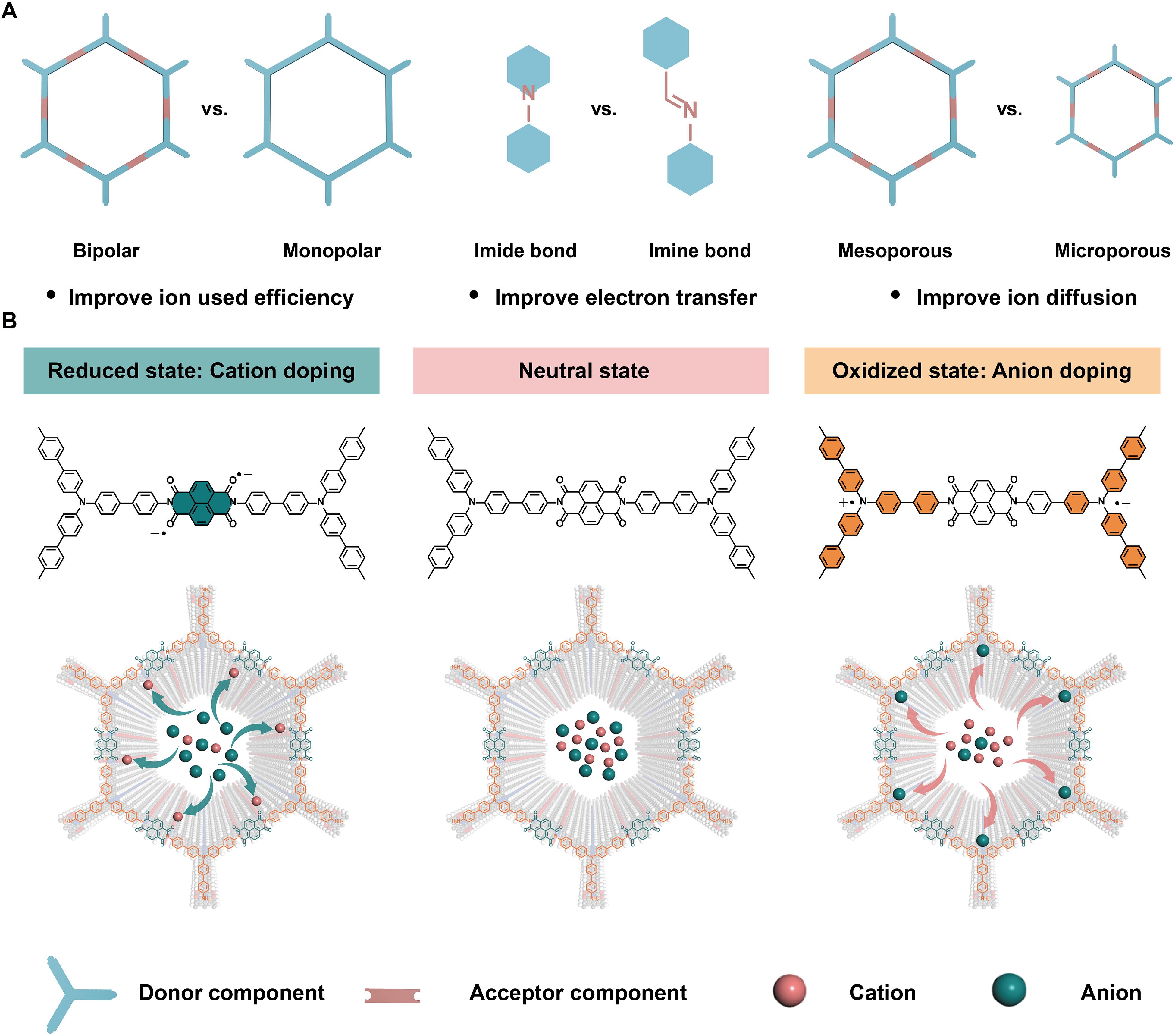氧化还原-双极性介孔二维共价有机框架的多色电致变色
IF 12.5
1区 综合性期刊
Q1 MULTIDISCIPLINARY SCIENCES
引用次数: 0
摘要
二维共价有机框架(COFs)在电致变色应用中很有前景,但目前大多数系统仅限于微孔、单极、亚胺连接的COFs,离子利用和电子传递效率低。在这里,我们报道了一个介孔,六方双极性COF,由三苯胺(供体)和萘二酐(受体)单元构成,形成具有双氧化还原活性位点的供体-受体(D-A)异质结构。这种结构促进了高效的双向离子传输和分子内电荷转移,导致氧化还原单元1,4,5,8-萘四羧基二酐(NTCDA/NTCDA)·-和n4,n4 -双[4 ' -氨基-(1,1 ' -联苯)-4-基]-(1,1 ' -联苯)-4,4 ' -二胺(TAAB/TAAB +)的可逆偶联。所得到的COF具有高光学对比度(例如,850纳米时为80%,485纳米时为53%)和优异的稳定性(500次循环后保持91%)的多色电致变色(棕-淡-蓝-绿过渡)。基于该COF的对称器件具有广谱可调性(400 ~ 1100纳米)和出色的循环稳定性(循环1000次后衰减1.5%),为基于COF的电致变色系统建立了性能基准。本文章由计算机程序翻译,如有差异,请以英文原文为准。

Redox-bipolar mesoporous two-dimensional covalent organic framework for multi-color electrochromism
Two-dimensional covalent organic frameworks (COFs) are promising for electrochromic applications, yet most current systems are limited to microporous, monopolar, imine-linked COFs with inefficient ion utilization and electron transport. Here, we report a mesoporous, hexagonal bipolar COF constructed from triphenylamine (donor) and naphthalene dianhydride (acceptor) units, forming a donor-acceptor (D-A) heterostructure with dual redox-active sites. This architecture facilitates efficient bidirectional ion transport and intramolecular charge transfer, leading to reversible coupling of redox units 1,4,5,8-naphthalenetetracarboxylic dianhydride (NTCDA/NTCDA)·− and N4,N4-bis[4′-amino-(1,1′-biphenyl)-4-yl]-(1,1′-biphenyl)-4,4′-diamine (TAAB/TAAB+). The resulting COF exhibits multicolor electrochromism (brown–pale-blue–green transitions) with high optical contrasts (e.g., 80% at 850 nanometers and 53% at 485 nanometers) and excellent stability (>91% retention after 500 cycles). Symmetric devices based on this COF show broad spectral tunability (400 to 1100 nanometers) and outstanding cycling stability (<1.5% decay after 1000 cycles), establishing a performance benchmark for COF-based electrochromic systems.
求助全文
通过发布文献求助,成功后即可免费获取论文全文。
去求助
来源期刊

Science Advances
综合性期刊-综合性期刊
CiteScore
21.40
自引率
1.50%
发文量
1937
审稿时长
29 weeks
期刊介绍:
Science Advances, an open-access journal by AAAS, publishes impactful research in diverse scientific areas. It aims for fair, fast, and expert peer review, providing freely accessible research to readers. Led by distinguished scientists, the journal supports AAAS's mission by extending Science magazine's capacity to identify and promote significant advances. Evolving digital publishing technologies play a crucial role in advancing AAAS's global mission for science communication and benefitting humankind.
 求助内容:
求助内容: 应助结果提醒方式:
应助结果提醒方式:


